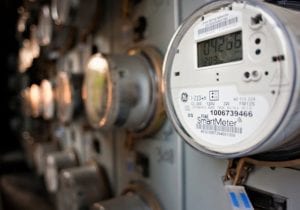In the rapidly evolving landscape of Consumer Energy Resources (CER) — encompassing rooftop photovoltaic (PV) systems, batteries (including grid connected electric vehicles), and IoT-controlled consumer devices — the integration of Artificial General Intelligence (AGI) presents unprecedented opportunities and challenges.
As we venture into this new era, it’s essential to balance enthusiasm for technological advancements with a deep understanding of their broader implications, especially in the context of the Australian National Electricity Market (NEM).
With CER’s, each part – a rooftop solar panel, a battery, or an IoT device – does more than its individual job. Together, they create a powerful network where their combined effect on system security is significantly larger than any one part alone. But often, the owners of these resources don’t see how important they are to the whole.
Artificial intelligence (AI) is revolutionising the way we manage CER. AI can optimise energy production, storage, and distribution across these systems, significantly enhancing efficiency. However, this integration is not without its complexities. AI’s capability to adapt and learn could lead to unpredictable scenarios and unintended failure modes, potentially impacting grid stability and market dynamics.
Mustafa Suleyman, in The Coming Wave by Mustafa Suleyman with Michael Bhaskar, encapsulates a pivotal consideration: “We might not be able to control the final endpoints of our work or its long-term effects, but that is no reason to abdicate responsibility.”
This sentiment is especially relevant in scenarios such as AI systems autonomously managing CER components that could be vulnerable to errors, autonomous malicious control, to interference by bad actors, leading to actions that might result in market destabilisation, loss of grid security, damage to devices/infrastructure and power outages.
Such scenarios might seem far-fetched or fanciful, but are they? As Suleyman further notes: “We don’t know what failure modes are being introduced and how deep they could extend”, and concluding “We cannot know how quickly an AI might self-improve”.
To navigate these challenges, the following proactive strategies are offered as a starting point:
Robust Cybersecurity: Implementing advanced cybersecurity protocols is crucial in protecting energy systems from hacking, especially as AI systems become more interconnected and vulnerable to sophisticated cyber-attacks.
Diverse and Redundant Systems: Avoiding over-reliance on a single type of technology or control system can reduce vulnerability. Using a mix of different hardware, software, and control mechanisms can create a more resilient system.
Regulatory Oversight and Standards: Establishing clear guidelines and standards for AI integration in energy systems, including rooftop PV and CER, can help manage risks. Regular audits and compliance checks can ensure these systems are secure and operate within safe parameters.
Public-Private Collaboration: Collaboration between government, industry, and academia can lead to the development of better containment strategies. Sharing knowledge and resources can help in understanding AI’s implications in the energy sector more comprehensively.
Scenario Planning and Simulations: Regular scenario planning and simulations can help in anticipating and preparing for potential AI-related disruptions or failures in the energy grid.
Consumer Education and Involvement: Educating consumers about the benefits and risks of rooftop PV systems, and involving them in discussions about energy security, can lead to a more informed and engaged public.
Ethical AI Development: Ensuring that AI systems developed for energy management adhere to ethical guidelines can mitigate risks associated with AI autonomy and decision-making.
Addressing the Costs: All these advancements in the containment of AI diffusion threats to CER come with associated costs. The development and implementation of AI systems, robust cybersecurity measures, and the necessary infrastructure upgrades require significant investment. Managing these costs effectively is crucial to ensure that the benefits of CER are accessible to a wide range of consumers and not just a privileged few. Innovative funding models and government incentives can play a vital role in this regard.
Industry bodies and advocates representing the interests of CER, such as the Australian Energy Market Commission (AEMC), Australian Energy Market Operator (AEMO), Australian Energy Regulator and the Smart Energy Council [I have no doubt the work has already started], can be instrumental in shaping the policies and securing the funding necessary for these developments. They can engage in leadership roles, advocating for the balanced integration of AI capabilities in and around CER, and ensuring that the path forward is sustainable, equitable, and secure.
As Suleyman’s quote reminds us, while we may not fully control the long-term outcomes of integrating AI into CER and its supporting systems, it is our responsibility to manage and guide this integration thoughtfully and proactively. By doing so, we can harness the benefits of AI for CER while ensuring the security and stability of our power systems.
The goal is to move forward together, with an informed and proactive stance, to navigate the future of energy in Australia, fully aware of the dual nature of these advancements and the costs involved in pioneering such technologies.
Let’s go …
Geoff Eldridge is an analyst with GPE NEMLog. This article was originally published on LinkedIn. Read here.









